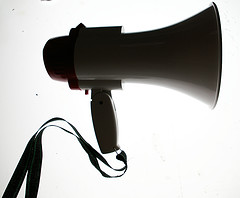 “I’m terrible at making small talk! I have no problem talking to people one-on-one but put me in a roomful of people, I just freeze and don’t know what to say!” A fellow member of our ToastMaster club shared this tale of how his father was great at making small talk but the skill seemed to have somehow eluded him. He finally decided that not only would he learn how to be a better conversationalist, one capable of making small talk but would actually deliver a speech to our club. And so he did. As the assigned evaluator that evening, I took rapid notes as he spoke and as I glanced through the notes later that evening I realized these were indeed very good advice for all of us – whether we were looking to be better conversationalists or just better listeners. So here are his insights
“I’m terrible at making small talk! I have no problem talking to people one-on-one but put me in a roomful of people, I just freeze and don’t know what to say!” A fellow member of our ToastMaster club shared this tale of how his father was great at making small talk but the skill seemed to have somehow eluded him. He finally decided that not only would he learn how to be a better conversationalist, one capable of making small talk but would actually deliver a speech to our club. And so he did. As the assigned evaluator that evening, I took rapid notes as he spoke and as I glanced through the notes later that evening I realized these were indeed very good advice for all of us – whether we were looking to be better conversationalists or just better listeners. So here are his insights
Observe Look at the most effective person in a room – the one who’s surrounded by others and is most engaging. Walk up to them and observe, how they initiative conversation, and how they sustain it. What works for them may not work for you – and even if it did, adapt it to your style.
Be a good listener This seems counterintuitive, at least initially. To be a good conversationalist you need to be a good – active – listener. One way to do that is to ask questions – questions that acknowledge what they said, or clarify – open-ended questions so that they can drive the conversation. Observe how they respond. Rinse and repeat.
Reverse Questions Often people may start conversations by asking you questions. All of us have met folks who’ve walked up to us and asked questions such as “What is it you do?” or “How do you know the Samuels?” One technique my friend shared was to respond in kind – “That’s an interesting question. I was, in fact, going to ask you the same. What is it that you do?” Of course done right, this will not seem so much a deflection, but an expression of interest.
Body Language Conversation isn’t just verbal. When I first came to the US as a grad student, I was lucky enough to have a good friend Marcel (from the Netherlands) who pointed out to me that I tended to not only invade folks private space, but also reach out and touch them, literally. “Not a good idea,” as he put it. Observe people’s body language – of both speakers and listeners, when it’s done right and others respond positively and when it isn’t.
Listening while speaking Even when you are the designated speaker, when the floor has been ceded to you, confine your speaking to a finite amount (my friend recommended 30% – not sure there’s a magic number) and get your audience to engage by getting them to speak, whether through questions, responses or other forms of participation. In other words, even when you are “speaking” you are getting others to speak and you get to listen.
Prepare Nothing makes you a good conversationalist (or even a listener) as being prepared. Preparation here is not so much a speech you give – as much as having trivia or fun facts handy – be it about the weather (always safe), a sports team, food, pets or current events. I’d hazard into politics or the election only if you know the folks and even then if you want to be invited back I’d stick with safer topics.
Be Authentic Nothing kills a conversation faster than being a phony. Evince keen interest in what the other person is saying – this is part of being a good listener but stay authentic. If you are being bored, don’t try to hang in there bravely – your body will announce your disinterest louder than your words. Even if you disagree, you don’t have to argue nor do you have to silently agree. In short be authentic.
Now get out there and work the room!


 Unless you have been living in a cave (or exploring one or
Unless you have been living in a cave (or exploring one or ![Reblog this post [with Zemanta]](https://i0.wp.com/img.zemanta.com/reblog_e.png?w=676)



You must be logged in to post a comment.